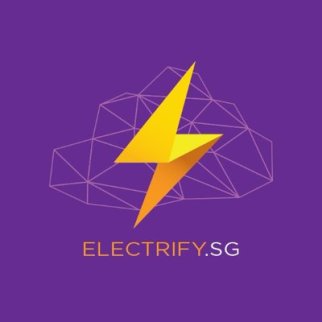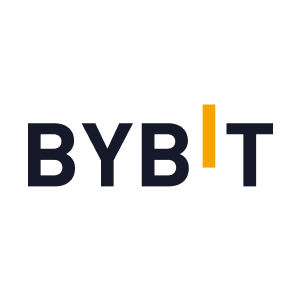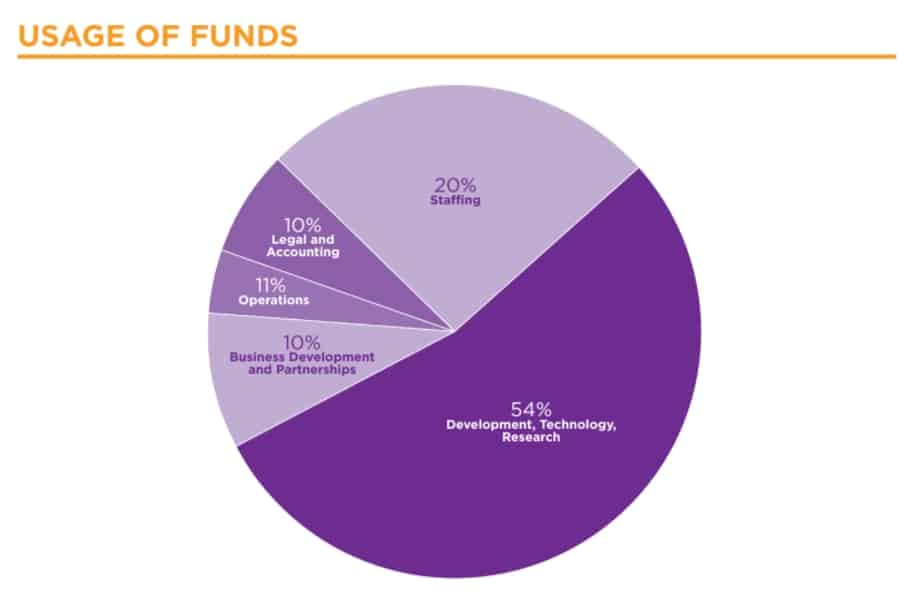Electrify Asia ELEC
Report IssueFundraising Statistics

Short Review Electrify Asia
Crypto project Electrify Asia (ELEC) is classified as a Energy. Electrify Asia is a Utility token that is hosted on the Ethereum Network. The current total supply is 750.00 M ELEC (Circulating Supply + Tokens yet to be released - Burned Tokens). (50% of total tokens) have been allocated for the public sale.
Electrify Asia ICO Overview
Estimated date for the public token sale: 23 February 2018. Electrify Asia (ELEC) price during the token sale: 0.08 USD. Min/Max Personal Cap: 0.5 ETH / 1.067 ETH. You can purchase project tokens for ETH
Residents of the following countries will not be able to participate in the public sale of tokens: USA
ELEC Price Chart
The launch of ELEC token trading took place on 9 March 2018.
Total sold 405.75 M ELEC tokens (54.10% of total tokens). Total amount of funds raised by the Electrify Asia project is $30.00 M.
Electrify Asia Investors
Description of the Electrify.Asia cryptocurrency
Imagine a world not so far away, where everyone would only eat potatoes. And the people are free, they must buy it from the King, who has a monopoly. One day, the King allowed several traders across the kingdom to sell the same potatoes. But, alas, there was not much competition between traders. Merchants did not disclose their prices, and the population simply bought and paid what they were told. This went on for years.
And one day everything changed, these traders opened a market.
At the market, people could choose for themselves, some merchant had the best conditions and prices. It was also possible to buy potatoes in bulk at the market. The market attracted other traders from neighboring castles and distant countries. Overseas traders had other varieties of potatoes. At the market you could bring your potatoes from the garden and sell them. There were many small bags of potatoes for people to look at before buying.
But this is not the end. The traders wanted to make the market better and help people. Therefore, they invented the barn magic ledger. And they distributed it to all residents who came to the market. It was impossible to alter or rewrite anything in it. So ...
Product
ELECTRIFY.ASIA is the first retail electricity platform in Southeast Asia to offer dynamic pricing. They want to be the first in Asia, and also to develop smart contracts for the purchase of electricity, on a new trading platform. The technology will be built on a distributed architecture with transactions recorded on the blockchain.
The purpose of the platform is to make markets fully accessible and transparent for consumers and producers
The traditional market creates many trading problems for private producers. Thanks to blockchain technology and a good understanding of energy markets, their solution brought economic benefits to the mass consumer and decentralized energy producers.
The benefit of energy trading on the blockchain is that all processes go through smart contracts. When power is generated and transmitted by a consumer, the blockchain continuously records the source and amount of power. At the end of each predefined time block, a smart contract can be used to automatically transfer payments from the user to the producer. Real-time smart contracts can be used to ensure payment for electricity delivery, which helps with counterparty risk for both parties. Producers can be confident that the energy they supply will be paid for, and consumers can be confident that they are not paying up front or facing future supply issues.
Real-time settlements can be tied to traditional contracts such as utilities and even peer-to-peer (P2P) supply contracts. P2P contracts between distributed sources are gaining traction in mature networks as more people choose to generate energy using renewable sources.
Often, excess capacity can only be sold to the operator at a less than ideal price, under conditions unfavorable to the manufacturer. P2P ELECTRIFY aims to offer P2P trading solutions over the network, allowing existing manufacturers to extract energy from their solar panels or encourage more households to install solar panels to sell to their neighbors.
PowerPod (IoT)
To accurately monitor power generation data, it will also offer PowerPod, an IoT device that can read meter data and record power generation data. energy production on the blockchain. At the energy producer's site, this device will accurately track and verify the amount and timing of energy production. PowerPod will also use AI to ensure the most suitable energy plan and supplier. Based on user parameters and preferences (such as energy source, price, contract length, usage patterns), the AI will analyze inputs from available P2P contracts and retail electricity plans to provide optimal recommendations for the user.
Electronic wallet (OmiseGO)
In addition, an electronic wallet will be created to facilitate payments between energy suppliers and consumers. It will display all transactions and store both fiat funds and system tokens (ELEC). The ELECTRIFY wallet will be developed based on and supported by OmiseGO.
Team
There are 13 people in the team, mostly people related in one way or another to energy, finance, and there are developers.
JULIUS TAN —CEO
- From 2015 to 2017, he worked at Sunseap for several years (the largest provider of clean energy solutions in Singapore) from manager to executive director of development.
- From 2014-2015 he worked as a research engineer in solar energy research
- From 2012-2014 he worked in various structures related to energy and finance.
Martin (The Martinator) Lim - Chief Operating Officer
More fun dude, also worked at Sunseap. The track record is no less: he had his own business, The Martinator Ltd. =), worked for HTC and many other Singaporean companies. Mainly in the field of marketing.
David Lin and Harry Cheung - Finance
Co-founders of Blockcelerate of the Singapore blockchain accelerator and partners of Gladiolus Capital
Advisers
Jun Hasegawa — Founder of Omise Holdings / OmiseGO
Dr. Yang Dazhi - Research Officer, Agency for Science, Technology and Research, Singapore
Dr. Licheng Liu - development in the field of solar energy in the Japanese market
Plans and roadmap
If the fees reach 30 million dollars, the product will be scaled in the markets of Japan, Philippines and Australia. (I think fees with 100% probability will be 30 million)
Role of the token (ELEC)
System tokens will be used for:
- Placing your order for sale energy on the trading platform.
- Payment of commissions for transactions in the system.
- Purchase of energy and additional services
- Consumer incentives.
Conclusions
I repeat, in the near future, if you are planning to make a transaction, then the same as notaries, patent business, registers related to real estate, the legal industry, finance and of course energy . I think projects like Electrify.Asia need to create a working prototype and establish partnerships with local Singaporean suppliers before scaling up to neighboring countries. Also achieve real results in your region. ICO considers it positive.



 ByBit
ByBit  Gate
Gate  Score
Score 